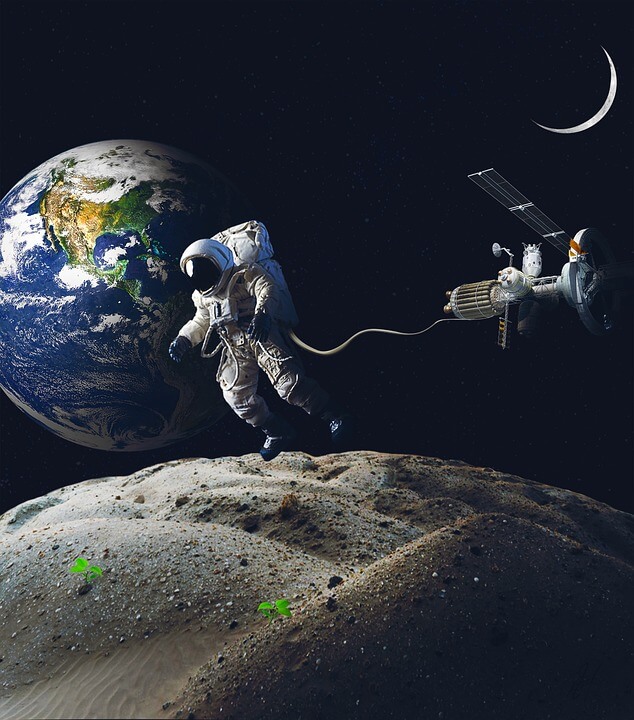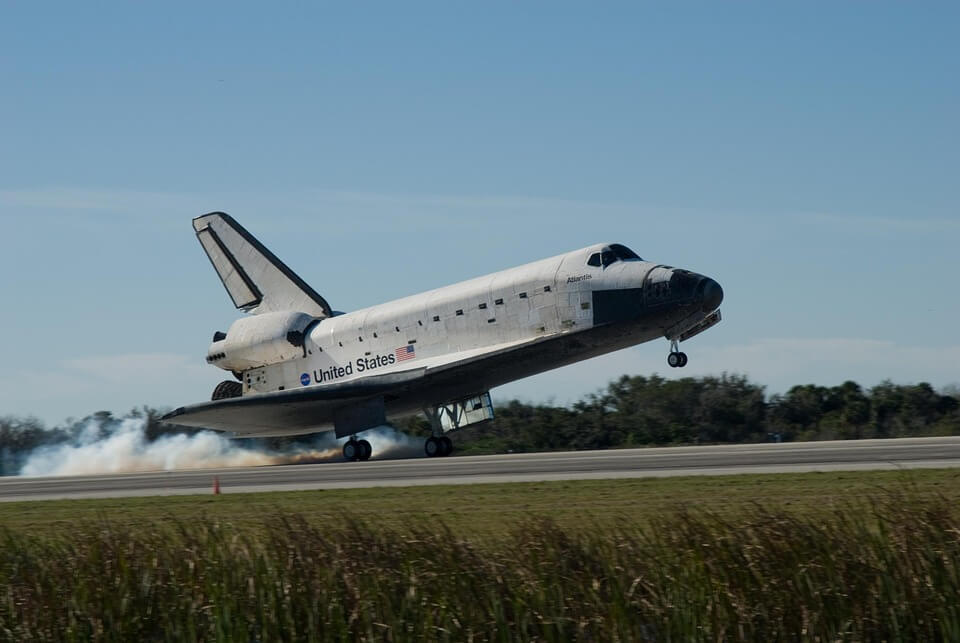Learn about the history and significance of the International Day for Human Space Flight, and why we celebrate it each year.
Discover the achievements of human space exploration, the benefits of space science and technology, and the ways in which space exploration has inspired and advanced our society.
The International Day for Human Space Flight is an annual observance held on April 12th to commemorate the anniversary of the first human space flight by Yuri Gagarin on April 12, 1961. This day is recognized by the United Nations General Assembly to celebrate the contributions of space science and technology to the betterment of humankind.
The day aims to raise public awareness of the benefits of space exploration, inspire young people to pursue careers in science, technology, engineering, and mathematics (STEM), and promote international cooperation in the peaceful exploration and use of outer space. It is a day to honor the courage and achievements of the early space pioneers and to recognize the ongoing work of scientists, engineers, and astronauts around the world who are advancing our understanding of the universe and pushing the boundaries of human knowledge and exploration.

Source: pixabay.com
History of International Day for Human Space Flight
The International Day for Human Space Flight was established by the United Nations General Assembly in April 2011, on the 50th anniversary of Yuri Gagarin’s historic first human spaceflight. The resolution, initiated by Russia, was co-sponsored by 62 countries and adopted unanimously by the General Assembly.
The day was proposed as a way to promote the peaceful exploration and use of outer space, highlight the contributions of space science and technology to the betterment of humankind, and inspire young people to pursue careers in STEM fields.
Since its establishment, the day has been observed annually on April 12th to coincide with the anniversary of Yuri Gagarin’s flight, which marked a major milestone in human history and opened up new possibilities for space exploration and scientific discovery.
Each year, the United Nations Office for Outer Space Affairs (UNOOSA) coordinates events and activities around the world to mark the occasion, including conferences, exhibitions, and educational programs. The day has become an important opportunity for the international space community to come together to celebrate their achievements, share their knowledge and expertise, and inspire the next generation of space explorers.
Human Space Flight Timeline
Here’s a timeline of some of the major events in human spaceflight history:
- April 12, 1961: Soviet cosmonaut Yuri Gagarin becomes the first human to travel into space, completing a single orbit of the Earth aboard the Vostok 1 spacecraft.
- May 5, 1961: American astronaut Alan Shepard becomes the first American in space, completing a suborbital flight aboard the Mercury spacecraft Freedom 7.
- February 20, 1962: American astronaut John Glenn becomes the first American to orbit the Earth aboard the Friendship 7 spacecraft.
- June 16, 1963: Soviet cosmonaut Valentina Tereshkova becomes the first woman in space, completing 48 orbits aboard the Vostok 6 spacecraft.
- March 18, 1965: Soviet cosmonaut Alexei Leonov becomes the first person to perform a spacewalk, spending 12 minutes outside the Voskhod 2 spacecraft.
- July 20, 1969: American astronauts Neil Armstrong and Edwin “Buzz” Aldrin become the first humans to walk on the Moon, as part of the Apollo 11 mission.
- April 19, 1971: Soviet cosmonauts Georgi Dobrovolski, Viktor Patsayev, and Vladislav Volkov die during reentry after a 23-day mission aboard the Salyut 1 space station, marking the first fatalities in space.
- July 15-24, 1975: The United States and Soviet Union conduct the first joint international human spaceflight mission, known as the Apollo-Soyuz Test Project.
- April 12, 1981: The United States launches the first Space Shuttle mission, STS-1, with astronauts John Young and Robert Crippen aboard.
- February 20, 1986: The Soviet Union launches the Mir space station, which remains in orbit until 2001 and hosts numerous long-duration missions.
- November 2, 2000: The first crew begins long-duration residency aboard the International Space Station (ISS), which has been continuously occupied since.
- October 4, 2004: The first privately-funded human spaceflight takes place with the launch of SpaceShipOne, piloted by Mike Melvill.
- October 12, 2019: NASA astronauts Jessica Meir and Christina Koch complete the first all-female spacewalk, lasting seven hours and 17 minutes.
These are just some of the many milestones in human spaceflight history, highlighting the incredible achievements and progress made by space agencies and their astronauts over the past several decades.
Did Yuri Gagarin orbit the Earth?
Yes, Yuri Gagarin orbited the Earth during his historic first spaceflight on April 12, 1961. He completed a single orbit of the Earth aboard the Vostok 1 spacecraft, which was launched by the Soviet Union. Gagarin’s flight lasted just under 108 minutes, during which he reached a maximum altitude of about 200 miles (327 kilometers) and a top speed of approximately 17,500 miles per hour (28,000 kilometers per hour) relative to the Earth’s surface. Gagarin’s successful orbital mission made him the first human to travel into space and marked a major milestone in human history.

Source: pixabay.com
International Day for Human Space Flight Activities
The International Day for Human Space Flight is celebrated annually on April 12th to commemorate the first human spaceflight by Yuri Gagarin in 1961. This day provides an opportunity for people around the world to celebrate the achievements of space exploration and to promote the peaceful use of outer space.
Here are some activities that are typically organized to mark the occasion:
- Public lectures and seminars: Space agencies, universities, and other organizations may organize public lectures and seminars to raise awareness about space science and technology and to highlight the latest developments in space exploration.
- Exhibitions and displays: Exhibitions and displays showcasing space artifacts, photographs, and models of spacecraft and satellites may be organized in museums, science centers, and public spaces to engage people of all ages.
- Science competitions: Science competitions and contests may be organized for students and young people to encourage them to learn more about space science and technology.
- Social media campaigns: Space agencies and organizations may run social media campaigns to engage the public and promote the benefits of space exploration.
- Astronomical observations: Astronomical societies and observatories may organize special viewing events to allow the public to observe celestial objects through telescopes and learn about the night sky.
- School projects: Schools may organize projects and activities related to space science and technology, such as building models of spacecraft, conducting experiments, or writing reports on famous space missions.
- Documentary screenings: Space-themed documentaries and films may be screened in theaters or online to raise awareness about space science and technology and to inspire young people to pursue careers in STEM fields.
These activities provide an opportunity for people of all ages and backgrounds to celebrate the achievements of human spaceflight and to learn more about the importance of space exploration for the betterment of humankind.
Why We Love and Celebrate International Day for Human Space Flight
The International Day for Human Space Flight is celebrated because it recognizes the incredible achievements and progress that humans have made in space exploration. The day is particularly significant as it marks the anniversary of Yuri Gagarin’s historic first spaceflight in 1961, which marked a major milestone in human history.
Here are some reasons why people love and celebrate the International Day for Human Space Flight:
- Advancing science and technology: Space exploration has led to numerous technological advancements, such as the development of new materials, tools, and technologies that have benefited various fields, including medicine, transportation, and communication.
- Expanding our knowledge of the universe: Space exploration has allowed us to learn more about the universe, including its origins, composition, and potential for life. This knowledge has expanded our understanding of the world around us and helped to inspire new scientific discoveries and breakthroughs.
- Inspiring future generations: Space exploration has captured the imagination of people around the world, particularly young people. Celebrating the International Day for Human Space Flight provides an opportunity to inspire the next generation of scientists, engineers, and space explorers.
- Promoting international cooperation: Space exploration has brought together people from different countries and cultures to work towards a common goal. Celebrating the International Day for Human Space Flight provides an opportunity to recognize the importance of international cooperation in advancing our understanding of the universe.
- Highlighting the peaceful use of outer space: The International Day for Human Space Flight also emphasizes the importance of peaceful cooperation in outer space, and the need to ensure the sustainable and responsible use of space resources.
Overall, the International Day for Human Space Flight provides an opportunity for people around the world to celebrate the achievements of human space exploration and to recognize the importance of space science and technology for the betterment of humankind.